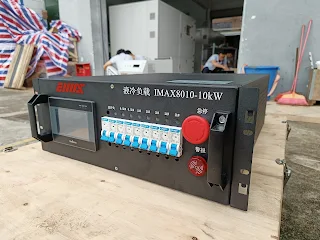Load Banks: A Neglected Source of Power System Hazards
Load banks play a critical role in power system maintenance, providing a means to test and validate the performance of power sources such as generators, Uninterruptible Power Supplies (UPS), and other critical power systems. However, the potential hazards associated with load banks are often overlooked, leading to significant risks in power system management. This blog will delve into the key dangers that load banks can pose to power systems and how to mitigate them.
Understanding Load Banks and Their Importance
A load bank is an essential tool used to simulate electrical loads for testing, maintenance, and troubleshooting power systems. It ensures that power systems such as generators and UPS units function effectively under varying loads. Load banks are invaluable for verifying the reliability and capacity of power sources in critical facilities like hospitals, data centers, and industrial plants.
However, despite their importance, load banks can become a source of significant hazards if not used or maintained correctly. This blog aims to highlight these potential dangers and how to address them to ensure safe and efficient operation.
Potential Hazards Associated with Load Banks
Electrical Hazards: Load banks operate at high voltages and currents, posing a risk of electrical shock or arc flash incidents if proper safety measures are not observed. Improper handling or faulty connections can lead to severe injuries or even fatalities. Moreover, load banks generate substantial heat, which can cause burns or other heat-related injuries if not adequately managed.
- Mitigation: Implement stringent safety protocols, such as using proper personal protective equipment (PPE), following lockout/tagout (LOTO) procedures, and ensuring only trained personnel handle the equipment. Regular inspections and maintenance of load banks can also prevent electrical faults.
Overheating and Fire Risks: Load banks can produce significant amounts of heat, especially during prolonged testing periods. Inadequate ventilation, accumulation of dust, or failure of cooling systems can lead to overheating. Overheated components can ignite nearby combustible materials, resulting in fires that may damage equipment and endanger lives.
- Mitigation: Ensure load banks are installed in well-ventilated areas and that cooling systems function effectively. Regular cleaning to remove dust and debris and monitoring temperature levels during operation can help prevent overheating and potential fire hazards.
Mechanical Hazards: Load banks involve mechanical components such as fans, switches, and resistive elements that can pose mechanical risks if they malfunction. Equipment failure can lead to injuries from moving parts or ejection of components. Furthermore, poorly maintained load banks can create additional risks of mechanical breakdowns that compromise testing accuracy and reliability.
- Mitigation: Conduct routine inspections and maintenance to identify and replace worn or damaged components. Proper training on safe operation and handling of load banks is essential to prevent mechanical injuries.
Environmental Impact: Load banks can also have a significant environmental impact if not managed properly. For instance, fuel-powered load banks may produce harmful emissions, while resistive load banks generate considerable heat that must be dissipated, potentially affecting surrounding environments.
- Mitigation: Choose load banks with environmentally friendly designs, such as those equipped with efficient cooling systems and reduced emissions. Ensure compliance with local environmental regulations and conduct regular checks to minimize the ecological footprint of load bank operations.
Incorrect Load Testing Procedures: Inaccurate load testing can compromise the reliability of the power system. Miscalculating load requirements or conducting tests outside the specified parameters may lead to incorrect conclusions, resulting in equipment failure when needed the most.
- Mitigation: Follow manufacturer guidelines and best practices for load bank testing. Use calibrated equipment to ensure accurate measurements and consider partnering with professional testing services to ensure proper procedures.
Best Practices for Safe Load Bank Operations
To prevent hazards associated with load banks, it is vital to implement best practices that prioritize safety, efficiency, and compliance with relevant standards. Here are some key steps to take:
Training and Certification: Ensure all personnel operating load banks are adequately trained and certified. Regular refresher courses should be provided to keep employees updated on safety protocols and operational guidelines.
Regular Maintenance and Inspection: Schedule routine inspections and maintenance checks to identify potential hazards and rectify them before they escalate. Keep detailed records of all inspections, repairs, and tests conducted.
Use of High-Quality Equipment: Invest in high-quality load banks that meet international safety standards. Quality equipment is less likely to malfunction, reducing the risk of accidents and operational downtime.
Emergency Response Planning: Develop and implement an emergency response plan that includes procedures for handling load bank-related incidents. Regular drills and training can help ensure personnel are prepared to respond swiftly and effectively in case of emergencies.
Conclusion
Load banks are indispensable tools for maintaining and testing power systems, but they come with potential hazards that must not be overlooked. Electrical, mechanical, and environmental risks can lead to severe consequences if not adequately managed. By following best practices, including regular maintenance, training, and proper testing procedures, power system operators can mitigate these hazards and ensure safe, reliable, and efficient operations.
In conclusion, while load banks provide vital services in power management, awareness and proactive management of the associated hazards are crucial. This approach will help maintain not only the safety of the operators but also the integrity and performance of the power systems they are designed to test.






Comments
Post a Comment